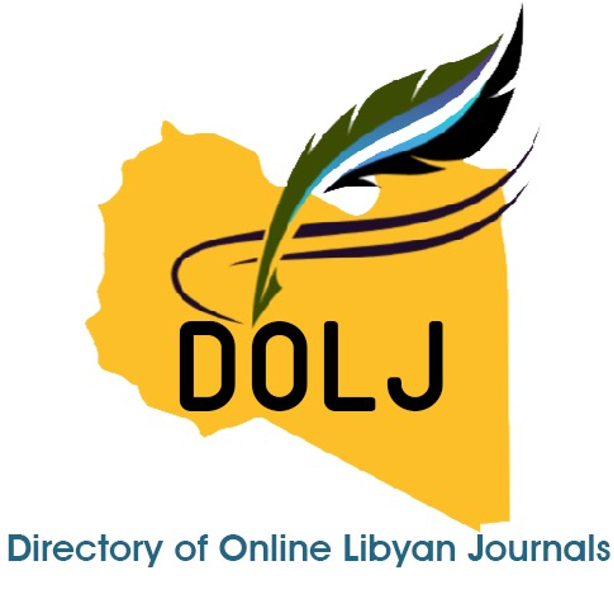تأثير محلول الكركم ضد السمية الكبدية والكلوية التي يسببها عقار دايكلوفيناك الصوديوم في ذكور طيور السمان
DOI:
https://doi.org/10.36602/jsba.2022.13.47الكلمات المفتاحية:
الكركم، دايكلوفيناك الصوديوم، طيور السمان، إنزيمات الكبد، وظائف الكلىالملخص
صممت الدراسة الحالية لتحديد التأثيرات السمية لدايكلوفيناك الصوديوم على بعض المعايير الكيموحيوية في ذكور طيور السمان واختبار مدى فعالية الكركم في التقليل من الأثار السمية الناجمة عن دايكلوفيناك الصوديوم. استخدام16 طير من السمان المحلي وقسمت إلي4 مجاميع، بواقع 4 طيور لكل مجموعة، وتركت لمدة أسبوع في أقفاص لكي تتأقلم، حيث المجموعة الأولى المجموعة الضابطة لم تتلقى أي معاملة والمجموعة الثانية تم حقنها بعقار الدايكلوفيناك الصوديوم بجرعة (2 ملغم/كغم من وزن الجسم) والمجموعة الثالثة جرعت بمحلول الكركم بجرعة(100مجم /كجم من وزن الجسم ) والمجموعة الرابعة حقنت بعقار الدايكلوفيناك الصوديوم وجرعت بمحلول الكركم بنفس الجرعات السابقة واستمرت التجربة لمدة 3أسابيع، و جمع المصل في نهاية التجربة لإجراء الاختبارات لبعض المعايير الكيموحيوية للكبد(AST,ALT,GGT,ALP)، والكلى(اليوريا والكرياتينين)، بينت النتائج أن المجموعة المحقونة بعقار ((DFS كانت نسبة السمية عالية ذات دلالة إحصائية (0.05> (P إذا ما قورنت بالمجموعة الضابطة، والمجموعة المعاملة بالكركم كانت قريبة من المجموعة الضابطة، توصلت الدراسة الحالية إلى أن محلول الكركم قلل من السمية الكبدية والكلوية التي سببها (DFS) على ذكور طيور السمان مقارنة بالمجموعة الضابطة.
المراجع
[1] Abubakar, K., Mailafiya, M. M., Chiroma, S. M., Danmaigoro, A., Zyoud, T. Y., Abdul Rahim, E., & Abu Bakar Zakaria, M. Z. (2020). Ameliorative effect of curcumin on lead‐induced hematological and hepatorenal toxicity in a rat model. Journal of biochemical and molecular toxicology, 34(6), e22483.
[2] Ahmed, A. Y., Gad, A. M., & El‐Raouf, O. M. A. (2017). Curcumin ameliorates diclofenac sodium‐induced nephrotoxicity in male albino rats. Journal of biochemical and molecular toxicology, 31(10), e21951
[3] Alabi, Q. K., & Akomolafe, R. O. (2020). Kolaviron diminishes diclofenac-induced liver and kidney toxicity in Wistar rats via suppressing inflammatory events, up regulating antioxidant defenses, and improving hematological indices. Dose-Response, 18(1), 1559325819899256
[4] Albadrany, Y., & Naser, A. (2019). Coenzyme Q10 coadministration with diclofenac augmented impaired renal function in broiler chickens
(Gallus gallus domesticus). Veterinary world, 13(4), 642–648. https://doi.org/10.14202/vetworld.2020.642-648
[5] Bessone, F. (2010). Non-steroidal antiinflammatory drugs: What is the actual risk of liver damage?. World journal of gastroenterology: WJG, 16(45), 5651. [6] Brater, D. C. (2002). Renal effects of cyclooxygyenase-2-selective inhibitors. Journal of pain and symptom management, 23(4), S15- S20.
[7] Chattopadhyay, I., Biswas, K., Bandyopadhyay, U., & Banerjee, R. K. (2004). Turmeric and curcumin: Biological actions and medicinal applications. Current science, 44-53
8] Gupta S.C., Patchva S., Koh W., Aggarwal B.B.(2012). Discovery of curcumin, a component of golden spice, and its miraculous biological activities. Clin. Exp. Pharmacol. Physiol. 2012;39:283–299
[9] Cooper, C., Chapurlat, R., Al-Daghri, N., Herrero-Beaumont, G., Bruyère, O., Rannou, F., & Reginster, J. Y. (2019). Safety of oral nonselective non-steroidal anti-inflammatory drugs in osteoarthritis: what does the literature say?. Drugs & aging, 36(1), 15-24
[10] Douichene, S., Rached, W., & Djebli, N. (2020). Hepato-Protective Effect of Curcuma longa against Paracetamol-Induced Chronic
Hepatotoxicity in Swiss Mice. Jordan Journal of Biological Sciences, 13(3).
[11] Ejaz, P., Bhojani, K., & Joshi, V. R. (2004). NSAIDs and kidney. Japi, 52(632-640), 371.
[12] Farashbandi, A. L., Shariati, M., & Mokhtari, M. (2021). Comparing the Protective Effects of Curcumin and Ursodeoxycholic Acid after Ethanol-Induced Hepatotoxicity in Rat Liver. Ethiopian journal of health sciences, 31(3), 673–682
[13] Farzaei, M. H., Zobeiri, M., Parvizi, F., El-Senduny, F. F., Marmouzi, I., CoyBarrera, E., ... & Abdollahi, M. (2018). Curcumin in liver diseases: a systematic review of the cellular mechanisms of oxidative stress and clinical perspective. Nutrients, 10(7), 855
[14] Hamza, A. A. (2007). Curcuma longa, Glycyrrhiza glabra and Moringa oleifera ameliorate diclofenac-induced hepatoxicity inrats. Am J Pharmacol Toxicol, 2(2), 80-88.
[15] Harirforoosh, S., West, K. O., Murrell, D. E., Denham, J. W., Panus, P. C., & Hanley, G. A. (2016). Examination of the pharmacodynamics and pharmacokinetics of a diclofenac poly (lactic-co-glycolic) acid nanoparticle formulation in the rat. Eur Rev Med Pharmacol Sci, 20(23), 5021-5031.
[16] Hosseini-Vashan, S. J., Yaghobfar, A., Golian, A., Zarban, M. A., & Emamdadi, F. (2011). Effects of turmeric powder in diets based on soybean oil on antioxidant status, blood enzyme and lipid metabolism of broiler chicks under heat stress. Euphrates Journal of Agriculture Science.
[17] Mahfouz, M. E., & Moussa, E. A. (2015). The impact of curcumin administration on the food colouring sunset yellow-induced damage intestes and liver of male rat: gene expression and ultrastructural studies. Egypt. J. Exp. Biol.(Zool.), 11(1), 43-60.
[18] Mousa, A. A., Elweza, A. E., Elbaz, H. T., Tahoun, E. A. E. A., Shoghy, K. M., & Elsayed, I. (2020). Eucalyptus Globulus protects against diclofenac sodium induced hepatorenal and testicular toxicity in male rats. Journal of Traditional and Complementary Medicine, 10(6), 521-528
[19] Mazumdar, K, Dutta, NK, Dastidar, SG, Motohashi, N, Shirataki, Y(2006). Diclofenac in the management of E. coli urinary tract infections. In Vivo. ;20(5):613–619.
[20] Orinya, O. A., Adenkola, A. Y., & Ogbe, R. J. (2016). Haematological and biochemical studies on the effect of diclofenac sodium on Wistar Rattus norvegicus. International Journal of Biological and Chemical Sciences, 10(5), 2231-2242.
[21] Reddy, N. P., Anjaneyulu, Y., Sivasankari, B., & Rao, K. A. (2006). Comparative toxicity studies in birds using nimesulide and diclofenac sodium. Environmental Toxicology and pharmacology, 22(2), 142-147.
[22] Sahin, K., Orhan, C., Tuzcu, Z., Tuzcu, M., & Sahin, N. (2012). Curcumin ameloriates heat stress via inhibition of oxidative stress andmodulation of Nrf2/HO-1 pathway in quail. Food and Chemical Toxicology, 50(11), 4035-4041.
[23] Salahshoor, M., Mohamadian, S., Kakabaraei, S., Roshankhah, S., & Jalili, C. (2016). Curcumin improves liver damage in male mice exposed to nicotine. Journal of traditional and complementary medicine, 6(2), 176-183.
[24] Saran, R. P., Purohit, A., & Ram, H. (2016). A comparative patho-physiological study of diclofenac and meloxicam induced toxicity in Gallus domestics. Am. J. Pharm. Health Res, 4(11), 71-84.
[25] Saraswati, T. R., Manalu, W., Ekastuti, D. R., & Kusumorini, N. (2013). Increased egg production of Japanese quail (Cortunix japonica) byimproving liver function through turmeric powder supplementation. International journal of poultry Science, 12(10), 601-614.
[26] Shitara, Y., Sato, H., & Sugiyama, Y. (2005). Evaluation of drug-drug interaction in the hepatobiliary and renal transport of drugs. Annu. Rev. Pharmacol. Toxicol., 45, 689-723
[27] Soliman MM, Abdo Nassan M, Ismail TA.( 2014). Immunohistochemical and molecular study on the protective effect of urcumin against hepatic toxicity induced by paracetamol in Wistar rats. BMC Complement Altern Med Nov 29;14:457. doi: 10.1186/1472-6882-14-457. PMID:25432491; PMCID: PMC4258929.
28] Srinath, A., Jyothi, V., & Jyothi, V. A. (2010). Hepatoprotective activity-a review. International Journal of Pharmacy and Technology, 2(3), 354 366.
[29] Elsisi, S. F., & El-Nabarawy, S. K. (2011). Protective effect of taurine and bismuth subnitrate against cyclosporine and NSAIDinducednephrotoxicity in rats. J Am Sci, 7(1), 912-921.
[30] Thanagari, B. S., Fefar, D. T., Prajapati, K. S., Jivani, B. M., Thakor, K. B., Patel, J. H., ... & Undhad, V. V. (2012). Haemato-biochemical alterations induced by diclofenac sodium toxicity in Swiss albino mice. Vet World, 5(7), 417-419
[31] Tokaç, M., Taner, G., Aydın, S., Özkardeş, A. B., Dündar, H. Z., Taşlıpınar, M. Y., ... & Basaran, N. (2013). Protective effects of curcumin against oxidative stress parameters and DNA damage in the livers and kidneys of rats with biliary obstruction. Food and Chemical Toxicology, 61, 28-35.
[32] Vyas, A., Purohit, A., & Ram, H. (2019). Assessment of dose-dependent reproductive toxicity of diclofenac sodium in male rats. Drug and chemical toxicology, 42(5), 478-486.
[33] Wamutu, S., Francque, S., Chatterjee, S., Musisi, E., Muyombya, G. W., Van Marck, E., ... & Michielsen, P. (2012). Vitamin C as well as β-carotene attenuates experimental liver fibrosis after intoxication with carbon tetrachloride in rats. International Journal of Biological and Chemical Sciences, 6(2), 559-571.
[34] Yasmeent T., Qureshi G.S., Perveen S.(2007). Adverse effects of diclofenac sodium on renal parenchyma of adult albino rats .J Pak Med Assoc. ;57:349–351.
[35] Zhao, X. C., Zhang, L., Yu, H. X., Sun, Z., Lin, X. F., Tan, C., & Lu, R. R. (2011). Curcumin protects mouse neuroblastoma Neuro-2A cells against hydrogen-peroxide-induced oxidative stress. Food Chemistry, 129(2), 387-394
التنزيلات
منشور
كيفية الاقتباس
إصدار
القسم
الرخصة
الحقوق الفكرية (c) 2022 08-02

هذا العمل مرخص بموجب Creative Commons Attribution 4.0 International License.














